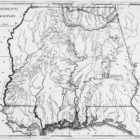Fushatchee Tribe
Fushatchee Tribe
Fushatchee were a Muscogee sub-tribe. They were located were Alabama and Florida in the United States.
The Fushatchee may have come out of three different Muscogee tribes: Kanhatki, Kolomi, and the Atasi. They were first noted as existing in 1733. Traders tracked them as being in the region from then until 1797. Some traders called them the “Coosahatchies of Swan”. The village is described by trader Hawkins as being on flat land, on the south side of the Tallapoosa River. The tribe grew corn on each side of the river. A ditch was built for fortification. Additional, older settlements were found down the river.
After the Red Stick War, the Fushatchee relocated to northern Florida. They disappeared in census data after 1832. Eventually, the tribe merged with the Kanhatki. They relocated together further west, after the Seminole Wars, and eventually into the Seminole Nation where they settled together. The tribe would be represented by the Seminole. Their village was called Liwahali.
The descriptive name of the Fus-hatchee and their intimate relations with Kolomi, Kan-hatki, and Atasi lead me to believe that they were a comparatively late branch of one of these. They appear first on the De Crenay map of 1733, in which they are placed on the south side of the Tallapoosa. They are also in the lists of 1738, 1750, 1760, and 1761. James Germany was their trader in the last mentioned year. In 1797 the trader was Nicholas White. The name is in the lists of Bartram* and Hawkins, and is evidently the “Coosahatchies” of Swan. In his list of Creek traders, made in May, 1797, Hawkins assigns none to this town; but in a second, dated the following September, he gives the name of William McCart, who had formerly been a hireling of Abraham M. Mordecai at Holiwahali.? Hawkins describes the town as follows:
Foosce-hot-che; from foo-so-wau, a bird, and hot-che, tail. It is two miles below Ho-ith-le-wau-le (Holiwahali) on the right bank of Tal-la-poo-sa, on a narrow strip of flat land; the broken lands are just back of the town; the cornfields are on the oppo site side of the river, and are divided from those of Ho-ith-le-wau-le by a small creek, Noo-coose-che-po. On the right bank of this little creek, half a mile from the river, is the remains of a ditch which surrounded a fortification, and back of this for a mile is the appearance of old settlements, and back of these, pine slashes. The cornfields are narrow, and extend down, bordering on the river.
This was one of those towns which went to Florida after the Creek American war, and consequently we find no mention of it in the census list of 1832. A small band is noted in northern Florida as early as 1778.10 It was accompanied by Kan-hatki, and after the Seminole war the two moved westward together and formed a single settlement in the southern part of the Seminole Nation. There they constituted one district, known as Fus-hatchee, and were so represented in the Seminole council. Their square ground was, however, known as Liwahali, because the leaders in forming it are said to have been Holiwahali Indians.
